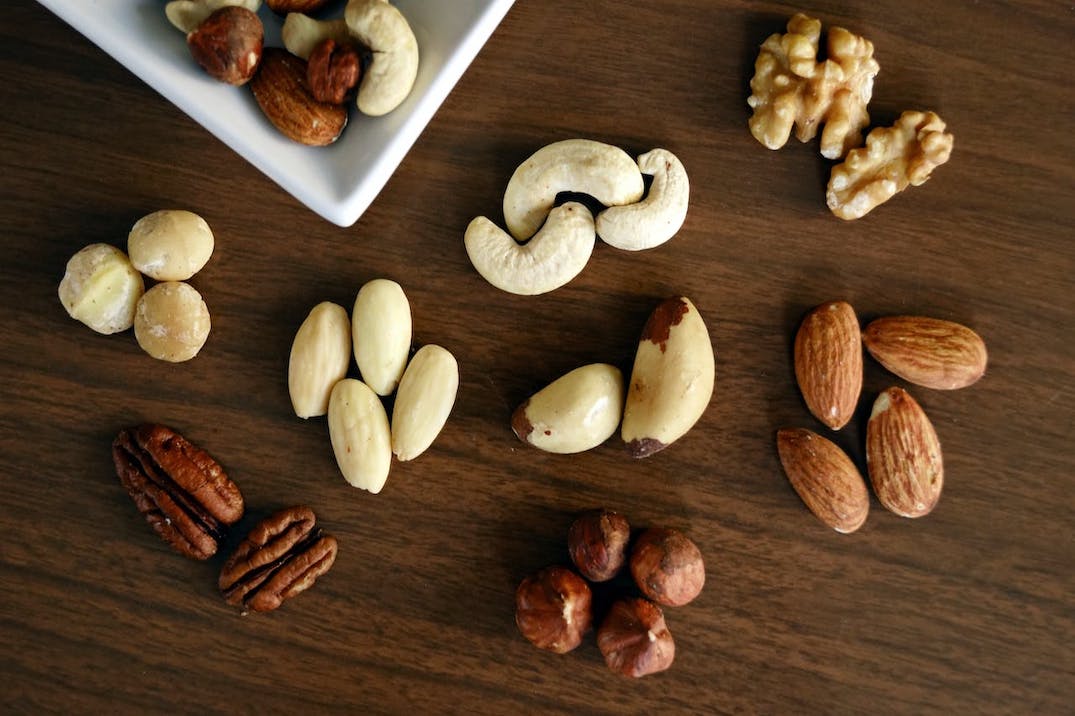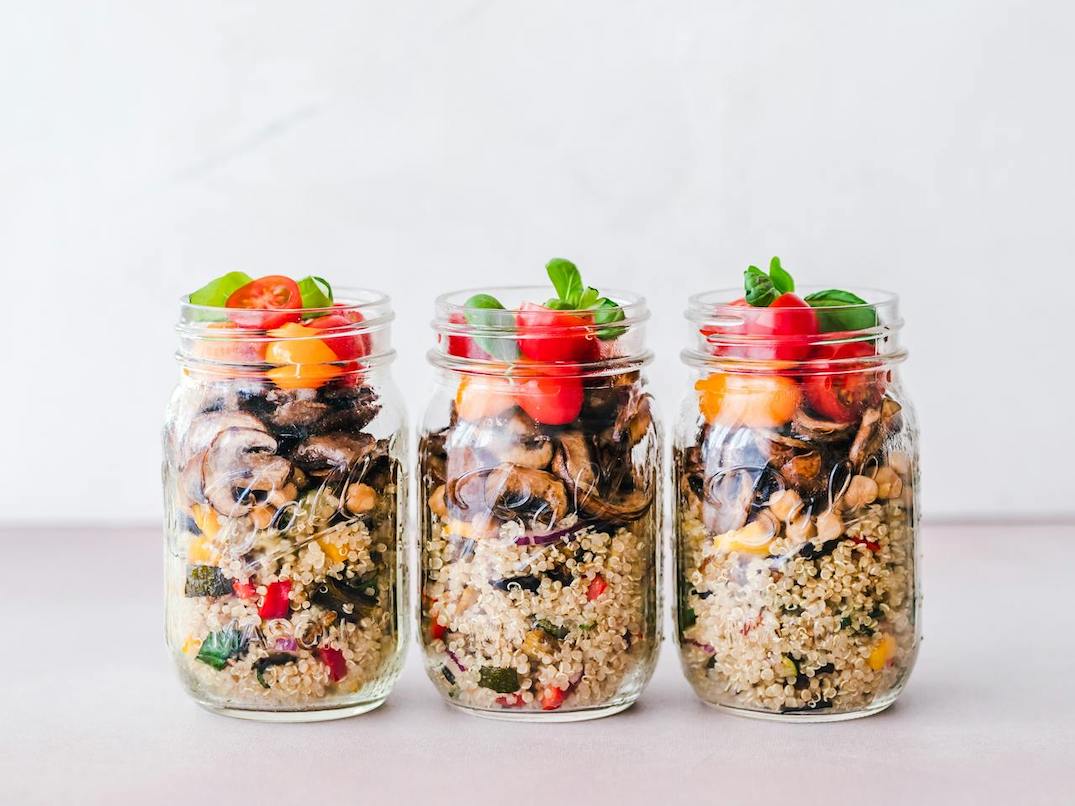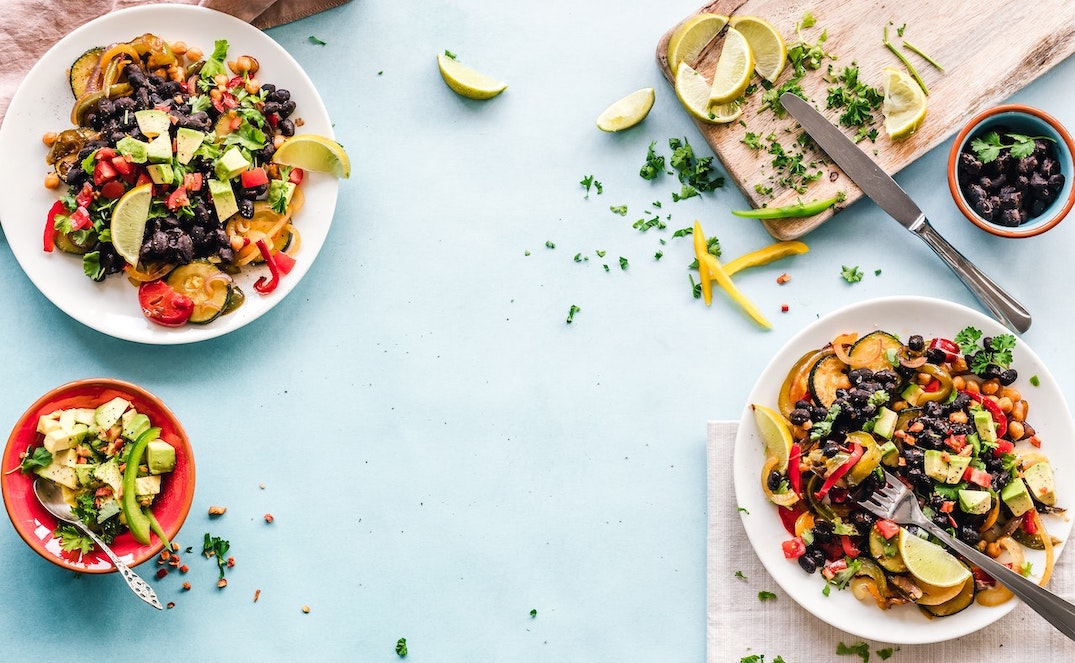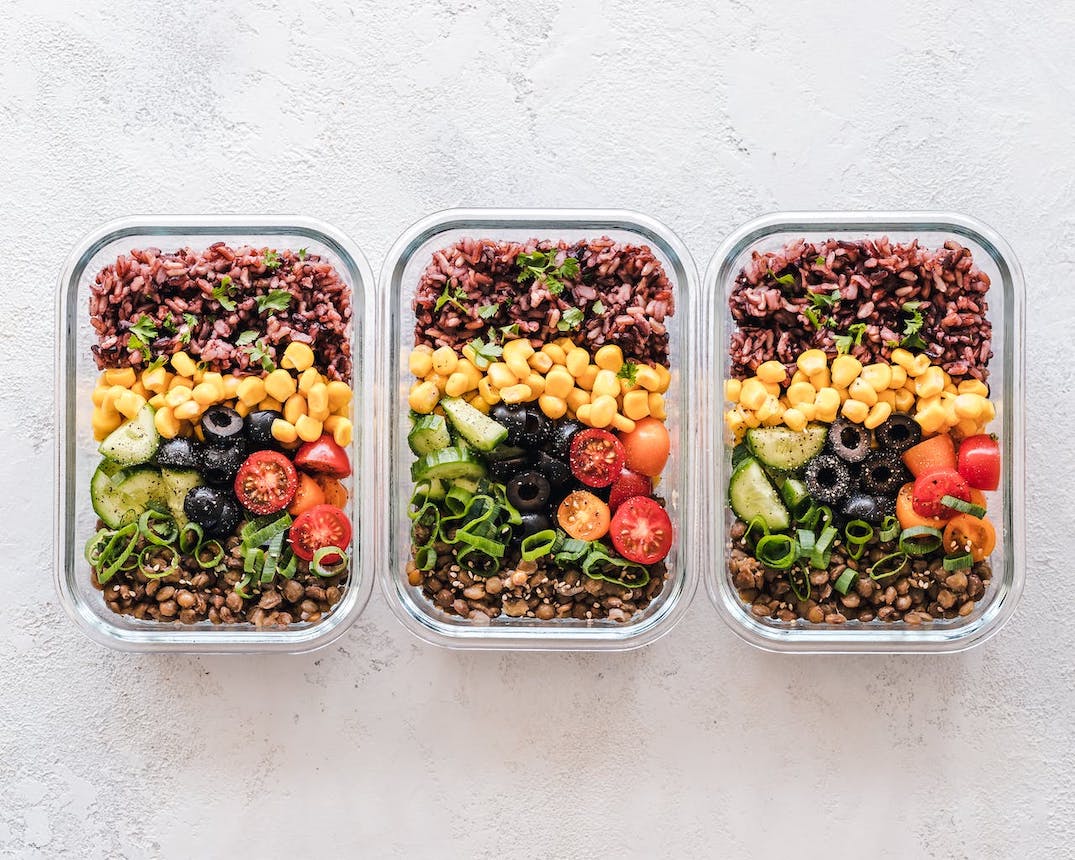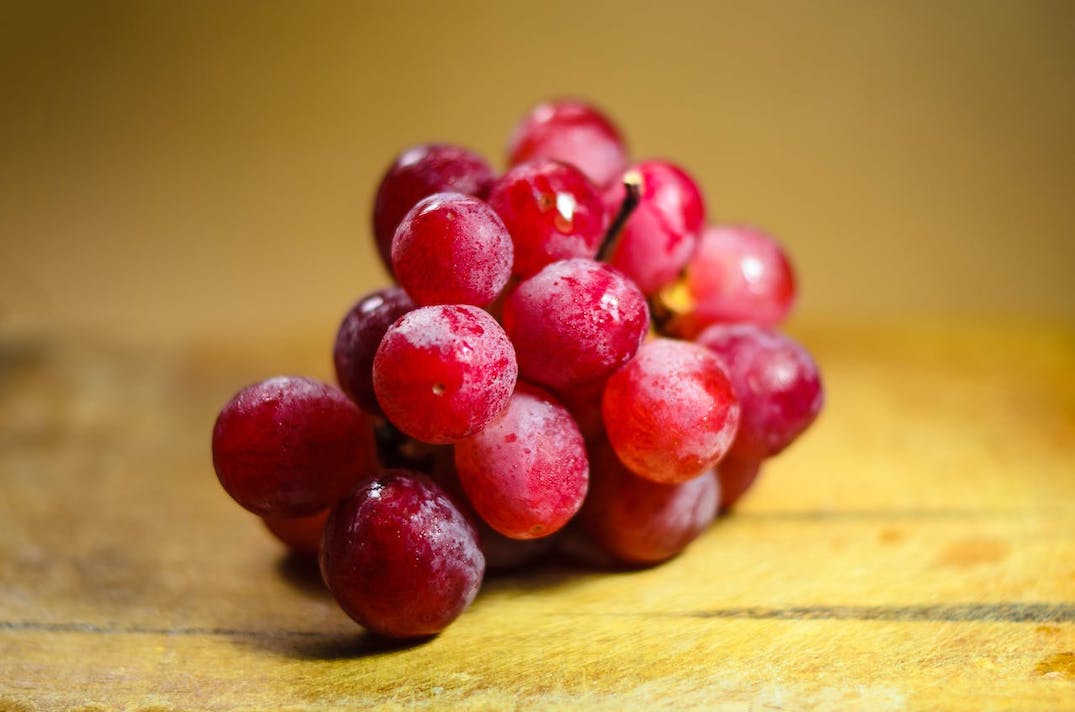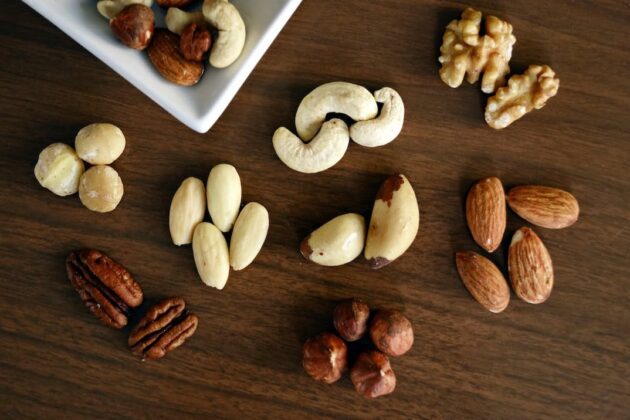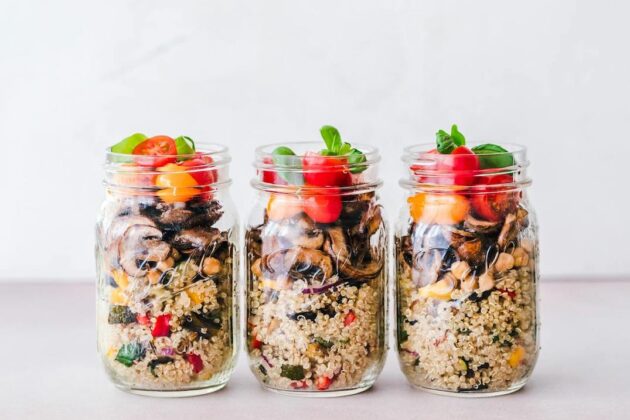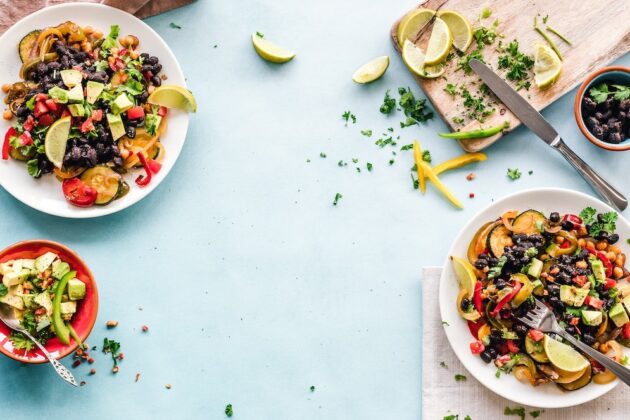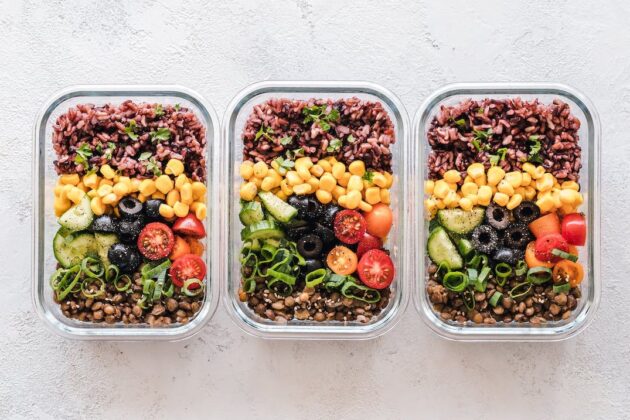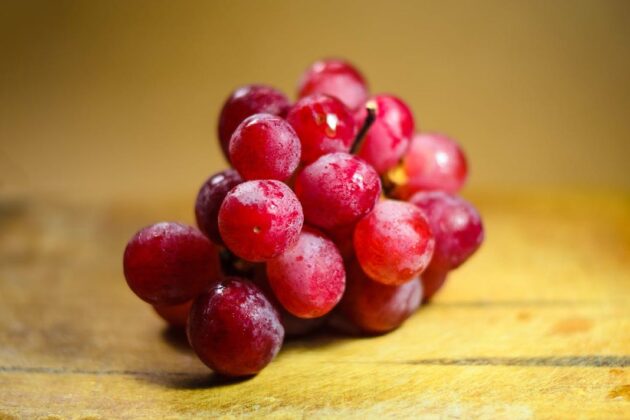7-Day Meal Plan for Fatty Liver: Best & Worst Foods to Eat
Our liver and kidneys are our body’s main filtration system, responsible for removing toxins from our blood. If you suffer from fatty liver disease, your liver may not be able to do its job properly, allowing toxins to build up in your body.
Fatty liver, also known as non-alcoholic fatty liver disease (NAFLD), is one of the most common liver conditions. It’s caused by an accumulation of fat in the liver, which results in inflammation and damage to important liver cells.
Common risk factors for NAFLD include obesity and type 2 diabetes, so weight loss is often the first line of treatment and can be highly effective.
A healthy diet for the management of fatty liver disease includes limiting the intake of fats, particularly those high in saturated fats from foods such as:
- High-fat cuts of red meat
- Processed meats
- Processed snack foods
- Butter
- Fried foods
You’ll also want to avoid foods that contain large amounts of simple sugars, such as:
- Candy
- Cakes
- Cookies
- Pastries
- Sodas
This guide provides a sample 7-day fatty liver meal plan and covers the best foods to eat, which to avoid, and everything else you need to know. If you just would like to see our fatty liver meal plan PDF, click here.

Find a dietitian covered by insurance
90% of Zaya Care patients pay $0 for dietitian visits
Best foods to eat with fatty liver
Making dietary changes to support weight loss and reduce triglyceride levels can help to improve fatty liver and reduce the risk of irreversible liver damage.
Before we dive into a sample 7-day fatty liver meal plan, let’s look at the best and worst foods to eat.
Here are foods that can help to improve fatty liver disease and should be incorporated into your diet for the treatment of this condition.
- Spinach & other leafy greens. Plant polyphenols present in leafy greens, such as spinach, may contribute to improvements in fatty liver and provide protective effects against its development.
- Beans & legumes. Beans and legumes contain a rich source of resistance starch and fiber which can help promote blood sugar management and improve triglyceride levels.
- Omega-3 fatty acids. Omega-3 fats from fatty fish such as salmon, tuna, and sardines can help reduce inflammation, improve HDL cholesterol, and reduce triglyceride levels.
- Olive oil. Swapping out saturated fats for unsaturated ones, such as those found in olive oil, olives, nuts, seeds, and fatty fish, can help improve triglyceride levels. Diets that encourage more of these foods, such as the Mediterranean diet, are often recommended for those with NAFLD.
- Coffee. According to a 2021 review, enjoying a cup of coffee in the morning may protect against NAFLD and reduce the risk of complications in those who have it. Coffee may also help lower abnormal liver enzymes and reduce the risk of developing liver disease.
- Whole grains. Whole grains such as oats, quinoa, and whole grain bread are rich in fiber and can promote healthy lipid panels and a healthy weight in those with fatty liver.
- Nuts. Nuts, specifically walnuts, are a rich source of monounsaturated and omega-3 fats, fiber, and antioxidants, which may improve NAFLD. Nuts are also rich in protein and are very filling, which can help promote a healthy weight.
- Berries. According to research studies, berries such as strawberries, blueberries, and blackberries may provide anti-NAFLD benefits by modulating the gut microbiota composition which is often disrupted in NAFLD as well as exert antioxidant benefits.
- Garlic. Including garlic in your meals may help reduce liver fat accumulation as well as body fat and may help to improve any associated co-morbidities of NAFLD.
- Turmeric. The active ingredient in turmeric (curcumin) can help improve liver enzyme levels that commonly rise in the presence of NAFLD.
- Sunflower seeds. Sunflower seeds are a rich dietary source of vitamin E, an antioxidant that compliments treatment for NAFLD as it can help improve liver function.
- Avocado. Avocados are a rich source of monounsaturated fats and fiber, as well as a variety of other essential vitamins, minerals, and antioxidants that can help improve blood lipid levels and potentially improve liver damage in NAFLD.
Foods to avoid with fatty liver
Now that you know which foods can help support healthy liver function and recovery from NAFLD, let’s look at foods that should be avoided.
Below is a list of foods that can exacerbate NAFLD:
- Alcohol. Alcohol is processed as a toxin by the liver, so avoiding alcohol can help to prevent the worsening of symptoms and damage from NAFLD.
- Sugary drinks & foods. Foods that contain high amounts of added sugars, such as soda, candy, and other sweet treats, can increase the risk of worsening NAFLD as these are associated with weight gain and insulin resistance.
- Refined carbs. Frequent consumption of refined carbohydrate foods, such as processed snack foods, pastries, and sugary cereals, is associated with weight gain and obesity. Cutting down can help with achieving a healthy weight and improve NAFLD.
- Fried foods. One of the primary causes of NAFLD is elevated triglycerides from dietary fats and refined carbs. Swapping out saturated fats from fried or greasy foods to unsaturated fats from plant sources can improve triglyceride levels and liver health.
- Red meat. Red meats tend to be higher in saturated fat compared to other protein sources such as fish. Consuming excess amounts of red meat and processed meats can worsen NAFLD progression.
- Too much salt. According to a 2023 systematic review, those who consume a higher amount of sodium in their diet are more at risk of developing NAFLD.
- Foods with a lot of preservatives. Foods that contain excessive preservatives are likely highly processed food items that can initiate or exacerbate NAFLD and obesity.

Find a dietitian covered by insurance
90% of Zaya Care patients pay $0 for dietitian visits
7-day meal plan for fatty liver
Here is a sample 7-day fatty liver meal plan that includes many of the best foods listed above while avoiding those that can make the condition worse.
Remember, it’s always important to talk to your doctor and/or dietitian before changing your diet to learn what is best for your specific situation.
Your ideal diet may have more or fewer calories and incorporate different foods based on intolerances, preferences, and other medical conditions.
We recommend working with a registered dietitian to find the ideal fatty liver diet plan for your situation.
Day 1
- Breakfast: Oatmeal topped with sliced strawberries and a sprinkle of walnuts
- Lunch: Quinoa salad with chopped spinach, diced avocado, and grilled chicken dressed with olive oil and lemon juice
- Dinner: Baked salmon with a side of steamed broccoli and brown rice
- Snacks: Carrot sticks and hummus; a small handful of almonds
Day 2
- Breakfast: Greek yogurt with blueberries and a drizzle of honey
- Lunch: Whole grain wrap with turkey, avocado, mixed greens and a side of sliced cucumbers
- Dinner: Grilled trout with quinoa and roasted Brussels sprouts
- Snacks: A pear; small serving of sunflower seeds
Day 3
- Breakfast: Smoothie with spinach, banana, flaxseeds, and almond milk
- Lunch: Lentil soup with a side salad of mixed greens, cherry tomatoes, and olive oil dressing
- Dinner: Stir-fried chicken and vegetables (broccoli, bell peppers, carrots) over brown rice
- Snacks: Apple slices with almond butter; a few olives
Day 4
- Breakfast: Scrambled eggs with diced tomatoes and spinach, served on whole grain toast
- Lunch: Tuna salad made with olive oil on a bed of mixed greens
- Dinner: Baked cod with a side of asparagus and a quinoa pilaf
- Snacks: A small bowl of mixed berries and a few walnut halves
Day 5
- Breakfast: Overnight oats made with almond milk and chia seeds, topped with raspberries
- Lunch: Chickpea and avocado salad with olive oil and lemon dressing
- Dinner: Grilled chicken breasts with a side of roasted sweet potatoes and green beans
- Snacks: Sliced cucumber with hummus and a small peach
Day 6
- Breakfast: Whole grain toast with avocado and poached eggs
- Lunch: Quinoa and black bean stuffed bell peppers
- Dinner: Baked tilapia with a side of steamed kale and a sweet potato
- Snacks: A handful of mixed nuts and a Greek yogurt
Day 7
- Breakfast: Green tea; whole grain pancakes topped with sliced bananas and a dollop of Greek yogurt
- Lunch: Grilled vegetable and hummus wrapped in a whole grain tortilla
- Dinner: Turkey meatballs with spaghetti squash and a side salad of spinach, avocado, nuts, olive oil dressing
- Snacks: An orange and carrot sticks
>> See our printable fatty liver diet plan PDF

Find a dietitian covered by insurance
90% of Zaya Care patients pay $0 for dietitian visits
Tips for making your fatty liver meal plan work for you
If you are working on creating a fatty liver meal plan, it’s not one-size-fits-all. Everyone is different when it comes to their food preferences and available resources.
Below are a few tips to help you make your fatty liver meal plan work for you.
- Focus on whole, liver-healthy foods that you enjoy. Prioritize including foods you like in your meal plan. Avoid choosing foods just because they are considered healthy options because if you don’t like them, then you likely won’t continue to eat them.
- Meal prep before each week. It’s important to be consistent with your meal plan to see results. To be consistent, it helps to meal prep each week, so you have healthy options ready to grab and go. This also makes unplanned meals out and convenience options less desirable.
- Load up on vegetables. Vegetables are a rich source of dietary fiber, essential vitamins, minerals, and antioxidants. They are low in calories and a great way to help keep you satisfied without overeating. This helps aid in weight loss and NAFLD management.
- Choose unsaturated fats. Swap your saturated fats for unsaturated ones to promote liver health. For example, if you normally cook with butter, try swapping that out for extra-virgin olive oil instead.
- Avoid drinking calories. Calories from sugar-sweetened beverages like sodas and energy drinks can add up and are a big contributor to weight gain. Read food labels and choose no-calorie beverages or plain water instead. You can add flavor by trying fruit-infusion recipes.
- Slow down while eating. Eating fast may increase your risk of developing NAFLD. This is likely due to the relationship between eating fast and weight gain. Slow down the speed you are eating and try to practice being mindful and present during meals.
- Track what you eat. Tracking what you eat with an app like MyFitnessPal or on paper can help keep you accountable and aware of your food choices. This allows you to make simple swaps and adjustments.
- Stay hydrated. Higher intake of water may have a protective effect against NAFLD. Increase your fluid intake to maintain adequate hydration. To tell if you are getting enough, check the color of your urine. It should be pale yellow. If it’s dark, you need more water.
- Try out mocktails. Complete avoidance of alcohol is recommended, but this can be challenging in social settings. Try different mocktail recipes so you don’t feel like you are missing out.
- Get your family on board. Get your family involved in your meal plan. Share your goals with them and let them know the importance of the changes you are making for your overall health. Having family support can make these changes easier to stick with.
Why we recommend working with a Registered Dietitian if you have fatty liver disease
If you are struggling to manage your NAFLD, don’t go about it on your own. Consider working with a professional, such as a Registered Dietitian (RD), who can help you use your diet to improve your condition and overall health.
RDs are nutrition professionals who can provide tailored recommendations and guidance to support your health goals in a way that is achievable and sustainable. Just because you have this condition doesn’t mean that it needs to take over your life.
RDs can help you make practical changes in your diet that don’t feel overwhelming. They can work with you to include your specific dietary preferences and manage any other present health conditions so you can learn to enjoy eating once again.
Having NAFLD is no walk in the park, so don’t make it harder on yourself. Get help from someone who knows how to manage this condition and get back on track with the life you want to live.
We can help you find an RD who accepts your insurance here at Zaya Care so you can take the first step toward NAFLD management.
When you request an appointment with one of our Registered Dietitians, we’ll check your insurance so you know exactly how much you’ll have to pay if anything at all.
90% of Zaya Care patients pay $0 for nutrition care with a registered dietitian, as we are in-network with many major carriers.

Find a dietitian covered by insurance
90% of Zaya Care patients pay $0 for dietitian visits
Our liver and kidneys are our body’s main filtration system, responsible for removing toxins from our blood. If you suffer from fatty liver disease, your liver may not be able to do its job properly, allowing toxins to build up in your body.
Fatty liver, also known as non-alcoholic fatty liver disease (NAFLD), is one of the most common liver conditions. It’s caused by an accumulation of fat in the liver, which results in inflammation and damage to important liver cells.
Common risk factors for NAFLD include obesity and type 2 diabetes, so weight loss is often the first line of treatment and can be highly effective.
A healthy diet for the management of fatty liver disease includes limiting the intake of fats, particularly those high in saturated fats from foods such as:
- High-fat cuts of red meat
- Processed meats
- Processed snack foods
- Butter
- Fried foods
You’ll also want to avoid foods that contain large amounts of simple sugars, such as:
- Candy
- Cakes
- Cookies
- Pastries
- Sodas
This guide provides a sample 7-day fatty liver meal plan and covers the best foods to eat, which to avoid, and everything else you need to know. If you just would like to see our fatty liver meal plan PDF, click here.

Find a dietitian covered by insurance
90% of Zaya Care patients pay $0 for dietitian visits
Best foods to eat with fatty liver
Making dietary changes to support weight loss and reduce triglyceride levels can help to improve fatty liver and reduce the risk of irreversible liver damage.
Before we dive into a sample 7-day fatty liver meal plan, let’s look at the best and worst foods to eat.
Here are foods that can help to improve fatty liver disease and should be incorporated into your diet for the treatment of this condition.
- Spinach & other leafy greens. Plant polyphenols present in leafy greens, such as spinach, may contribute to improvements in fatty liver and provide protective effects against its development.
- Beans & legumes. Beans and legumes contain a rich source of resistance starch and fiber which can help promote blood sugar management and improve triglyceride levels.
- Omega-3 fatty acids. Omega-3 fats from fatty fish such as salmon, tuna, and sardines can help reduce inflammation, improve HDL cholesterol, and reduce triglyceride levels.
- Olive oil. Swapping out saturated fats for unsaturated ones, such as those found in olive oil, olives, nuts, seeds, and fatty fish, can help improve triglyceride levels. Diets that encourage more of these foods, such as the Mediterranean diet, are often recommended for those with NAFLD.
- Coffee. According to a 2021 review, enjoying a cup of coffee in the morning may protect against NAFLD and reduce the risk of complications in those who have it. Coffee may also help lower abnormal liver enzymes and reduce the risk of developing liver disease.
- Whole grains. Whole grains such as oats, quinoa, and whole grain bread are rich in fiber and can promote healthy lipid panels and a healthy weight in those with fatty liver.
- Nuts. Nuts, specifically walnuts, are a rich source of monounsaturated and omega-3 fats, fiber, and antioxidants, which may improve NAFLD. Nuts are also rich in protein and are very filling, which can help promote a healthy weight.
- Berries. According to research studies, berries such as strawberries, blueberries, and blackberries may provide anti-NAFLD benefits by modulating the gut microbiota composition which is often disrupted in NAFLD as well as exert antioxidant benefits.
- Garlic. Including garlic in your meals may help reduce liver fat accumulation as well as body fat and may help to improve any associated co-morbidities of NAFLD.
- Turmeric. The active ingredient in turmeric (curcumin) can help improve liver enzyme levels that commonly rise in the presence of NAFLD.
- Sunflower seeds. Sunflower seeds are a rich dietary source of vitamin E, an antioxidant that compliments treatment for NAFLD as it can help improve liver function.
- Avocado. Avocados are a rich source of monounsaturated fats and fiber, as well as a variety of other essential vitamins, minerals, and antioxidants that can help improve blood lipid levels and potentially improve liver damage in NAFLD.
Foods to avoid with fatty liver
Now that you know which foods can help support healthy liver function and recovery from NAFLD, let’s look at foods that should be avoided.
Below is a list of foods that can exacerbate NAFLD:
- Alcohol. Alcohol is processed as a toxin by the liver, so avoiding alcohol can help to prevent the worsening of symptoms and damage from NAFLD.
- Sugary drinks & foods. Foods that contain high amounts of added sugars, such as soda, candy, and other sweet treats, can increase the risk of worsening NAFLD as these are associated with weight gain and insulin resistance.
- Refined carbs. Frequent consumption of refined carbohydrate foods, such as processed snack foods, pastries, and sugary cereals, is associated with weight gain and obesity. Cutting down can help with achieving a healthy weight and improve NAFLD.
- Fried foods. One of the primary causes of NAFLD is elevated triglycerides from dietary fats and refined carbs. Swapping out saturated fats from fried or greasy foods to unsaturated fats from plant sources can improve triglyceride levels and liver health.
- Red meat. Red meats tend to be higher in saturated fat compared to other protein sources such as fish. Consuming excess amounts of red meat and processed meats can worsen NAFLD progression.
- Too much salt. According to a 2023 systematic review, those who consume a higher amount of sodium in their diet are more at risk of developing NAFLD.
- Foods with a lot of preservatives. Foods that contain excessive preservatives are likely highly processed food items that can initiate or exacerbate NAFLD and obesity.

Find a dietitian covered by insurance
90% of Zaya Care patients pay $0 for dietitian visits
7-day meal plan for fatty liver
Here is a sample 7-day fatty liver meal plan that includes many of the best foods listed above while avoiding those that can make the condition worse.
Remember, it’s always important to talk to your doctor and/or dietitian before changing your diet to learn what is best for your specific situation.
Your ideal diet may have more or fewer calories and incorporate different foods based on intolerances, preferences, and other medical conditions.
We recommend working with a registered dietitian to find the ideal fatty liver diet plan for your situation.
Day 1
- Breakfast: Oatmeal topped with sliced strawberries and a sprinkle of walnuts
- Lunch: Quinoa salad with chopped spinach, diced avocado, and grilled chicken dressed with olive oil and lemon juice
- Dinner: Baked salmon with a side of steamed broccoli and brown rice
- Snacks: Carrot sticks and hummus; a small handful of almonds
Day 2
- Breakfast: Greek yogurt with blueberries and a drizzle of honey
- Lunch: Whole grain wrap with turkey, avocado, mixed greens and a side of sliced cucumbers
- Dinner: Grilled trout with quinoa and roasted Brussels sprouts
- Snacks: A pear; small serving of sunflower seeds
Day 3
- Breakfast: Smoothie with spinach, banana, flaxseeds, and almond milk
- Lunch: Lentil soup with a side salad of mixed greens, cherry tomatoes, and olive oil dressing
- Dinner: Stir-fried chicken and vegetables (broccoli, bell peppers, carrots) over brown rice
- Snacks: Apple slices with almond butter; a few olives
Day 4
- Breakfast: Scrambled eggs with diced tomatoes and spinach, served on whole grain toast
- Lunch: Tuna salad made with olive oil on a bed of mixed greens
- Dinner: Baked cod with a side of asparagus and a quinoa pilaf
- Snacks: A small bowl of mixed berries and a few walnut halves
Day 5
- Breakfast: Overnight oats made with almond milk and chia seeds, topped with raspberries
- Lunch: Chickpea and avocado salad with olive oil and lemon dressing
- Dinner: Grilled chicken breasts with a side of roasted sweet potatoes and green beans
- Snacks: Sliced cucumber with hummus and a small peach
Day 6
- Breakfast: Whole grain toast with avocado and poached eggs
- Lunch: Quinoa and black bean stuffed bell peppers
- Dinner: Baked tilapia with a side of steamed kale and a sweet potato
- Snacks: A handful of mixed nuts and a Greek yogurt
Day 7
- Breakfast: Green tea; whole grain pancakes topped with sliced bananas and a dollop of Greek yogurt
- Lunch: Grilled vegetable and hummus wrapped in a whole grain tortilla
- Dinner: Turkey meatballs with spaghetti squash and a side salad of spinach, avocado, nuts, olive oil dressing
- Snacks: An orange and carrot sticks
>> See our printable fatty liver diet plan PDF

Find a dietitian covered by insurance
90% of Zaya Care patients pay $0 for dietitian visits
Tips for making your fatty liver meal plan work for you
If you are working on creating a fatty liver meal plan, it’s not one-size-fits-all. Everyone is different when it comes to their food preferences and available resources.
Below are a few tips to help you make your fatty liver meal plan work for you.
- Focus on whole, liver-healthy foods that you enjoy. Prioritize including foods you like in your meal plan. Avoid choosing foods just because they are considered healthy options because if you don’t like them, then you likely won’t continue to eat them.
- Meal prep before each week. It’s important to be consistent with your meal plan to see results. To be consistent, it helps to meal prep each week, so you have healthy options ready to grab and go. This also makes unplanned meals out and convenience options less desirable.
- Load up on vegetables. Vegetables are a rich source of dietary fiber, essential vitamins, minerals, and antioxidants. They are low in calories and a great way to help keep you satisfied without overeating. This helps aid in weight loss and NAFLD management.
- Choose unsaturated fats. Swap your saturated fats for unsaturated ones to promote liver health. For example, if you normally cook with butter, try swapping that out for extra-virgin olive oil instead.
- Avoid drinking calories. Calories from sugar-sweetened beverages like sodas and energy drinks can add up and are a big contributor to weight gain. Read food labels and choose no-calorie beverages or plain water instead. You can add flavor by trying fruit-infusion recipes.
- Slow down while eating. Eating fast may increase your risk of developing NAFLD. This is likely due to the relationship between eating fast and weight gain. Slow down the speed you are eating and try to practice being mindful and present during meals.
- Track what you eat. Tracking what you eat with an app like MyFitnessPal or on paper can help keep you accountable and aware of your food choices. This allows you to make simple swaps and adjustments.
- Stay hydrated. Higher intake of water may have a protective effect against NAFLD. Increase your fluid intake to maintain adequate hydration. To tell if you are getting enough, check the color of your urine. It should be pale yellow. If it’s dark, you need more water.
- Try out mocktails. Complete avoidance of alcohol is recommended, but this can be challenging in social settings. Try different mocktail recipes so you don’t feel like you are missing out.
- Get your family on board. Get your family involved in your meal plan. Share your goals with them and let them know the importance of the changes you are making for your overall health. Having family support can make these changes easier to stick with.
Why we recommend working with a Registered Dietitian if you have fatty liver disease
If you are struggling to manage your NAFLD, don’t go about it on your own. Consider working with a professional, such as a Registered Dietitian (RD), who can help you use your diet to improve your condition and overall health.
RDs are nutrition professionals who can provide tailored recommendations and guidance to support your health goals in a way that is achievable and sustainable. Just because you have this condition doesn’t mean that it needs to take over your life.
RDs can help you make practical changes in your diet that don’t feel overwhelming. They can work with you to include your specific dietary preferences and manage any other present health conditions so you can learn to enjoy eating once again.
Having NAFLD is no walk in the park, so don’t make it harder on yourself. Get help from someone who knows how to manage this condition and get back on track with the life you want to live.
We can help you find an RD who accepts your insurance here at Zaya Care so you can take the first step toward NAFLD management.
When you request an appointment with one of our Registered Dietitians, we’ll check your insurance so you know exactly how much you’ll have to pay if anything at all.
90% of Zaya Care patients pay $0 for nutrition care with a registered dietitian, as we are in-network with many major carriers.

Find a dietitian covered by insurance
90% of Zaya Care patients pay $0 for dietitian visits





